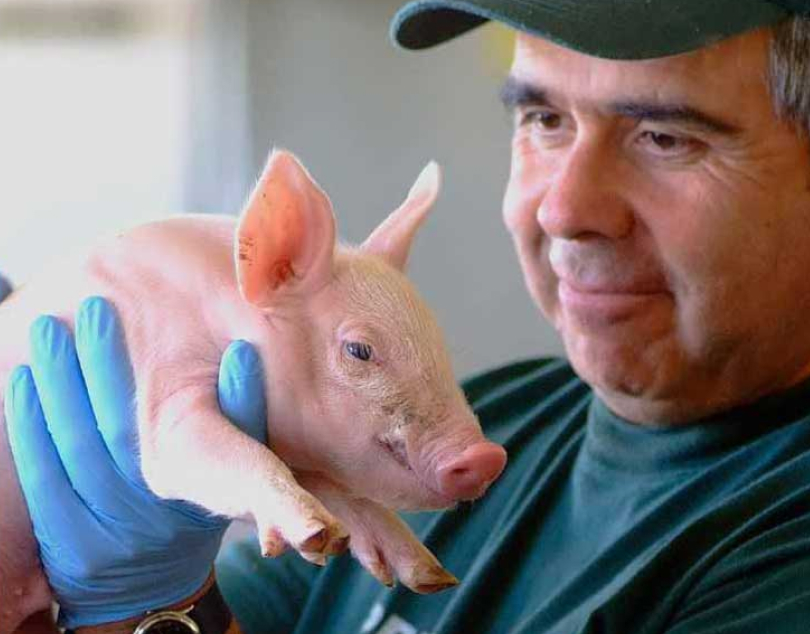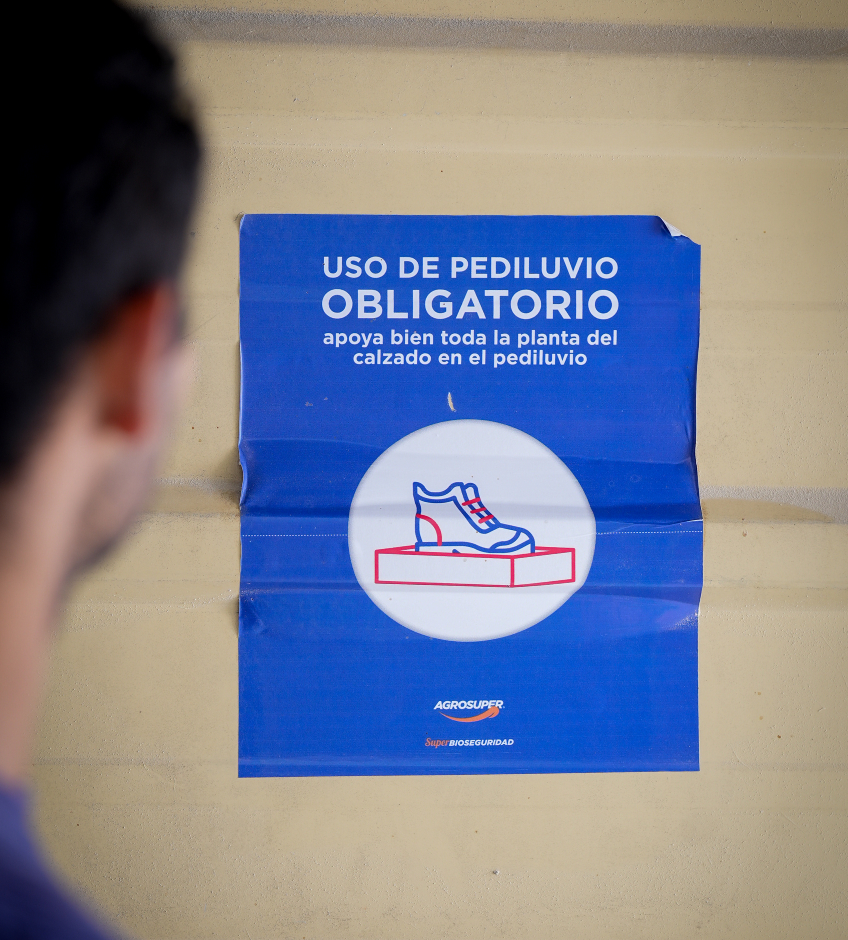Animal welfare policy
Meat Segment
At Agrosuper, our Animal Welfare Policy is governed by the five freedoms proposed by the World Organization for Animal Health (OIE), in addition to the regulations laid down by the Agriculture and Livestock Service (SAG).
Thanks to the health management we undertake—which includes developing and implementing various biosecurity, surveillance, contingency, prevention, and control plans—we generate safe and traceable results, as required by our Animal Welfare Policy.
As a company, we do not use hormones or antibiotics as
growth promoters in our animals and we only use drugs when strictly necessary, always when prescribed by an authorized veterinarian.
Internal Regulations
Our Internal Regulations include a Code of Conduct that explicitly details zero tolerance of animal abuse. Our commitment includes not only ourselves but our suppliers, so that they meet the standards we expect.
Animal welfare management
Animal welfare trainning

Service Providers
We require our contractors to certify that their employees who directly interact with our animals are trained in animal welfare.
Transportation Providers
There is a contract exhibit exclusive to animal welfare that allows us to ensure compliance with our animal welfare requirements.
Employees
We regularly train all our employees on animal welfare issues using various communication channels such as internal training programs, third-party collaborations, and content on our social network JAM.
Practices and agreements
Meat Segment

Chickens
• Catching is done in silence to avoid stress.
• The entire processes at our Las Cornizas farm, San Vicente Plant, and Las Arañas Hatchery are American Humane Certified for animal welfare.
• We have implemented an in-ovo vaccination machine at the Lo Miranda Hatchery, which allows us to vaccinate the chicks before hatching, reducing stress.

Pigs
• We do not clip their tusks.
• We use trucks with lifts that facilitate the entry of the pigs.
• We enrich the pigs’ environment with toys and other elements that encourage their natural behaviors.
• We have a farm that houses more than 300 females in a pen gestation system.
• We use intradermal, needle-free vaccination technology, minimizing stress.
• We perform tests that include the use of immunocastration.
• We have undertaken audits to obtain WelfCert standard animal welfare certification.

Turkeys
• We conduct diagnostic assessment audits with Cloverleaf’s animal welfare team at various facilities to identify opportunities for improvement and implement new procedures.
• Three farms received the Cloverleaf animal welfare certificate.
Aquaculture Segment
Animal welfare is a consistent concern throughout the value chain. We can only achieve healthy and sustainable production if our salmon are comfortable, free of diseases, and well fed, to achieve normal behavior.

Transport and farming
We work with transport and farming densities that are compatible with our production stock's wellbeing and animal health.

Confinement
Our animals are confined in a clean environment (nets), where we provide conditions for their growth (oxygen, treatments, feeding, and nutrition) that support their establishment during their cycle.

Desensitization
The animals are slaughtered with prior desensitization, a method that prevents animal suffering.
Freedoms guaranteed for our animals
Freedom from hunger and thirst.

Freedom from discomfort.

Freedom from pain or disease.

Freedom to express normal behavior.

Freedom from fear.

Biosecurity
Worldwide, the industry has been consistently exposed to animal diseases, such as Avian Influenza, African Swine Fever, among other pathologies. This means that we must have prevention, mitigation, and action mechanisms to address them, which has been a hallmark in Agrosuper for the protection of our animals and the assurance of operational continuity and sustainability of the business.
We have strict Biosecurity protocols, which allow us to prevent and minimize exposure to these diseases. Along these lines, we work in direct coordination with the Chilean Agriculture and Livestock Service (SAG) and have internal surveillance programs, which include permanent monitoring of health status and daily review of our production parameters.
In the event of a disease entering the country, biosecurity measures are reinforced and, upon detection of an outbreak in a production plant, the established emergency protocols are activated in direct coordination with the SAG.

Health Management
We have a preventive approach, using all available tools that incorporate biosecurity. These include the use of vaccines, genetic and nutritional improvements, smolt quality, and improvements in production infrastructure to minimize the risk of disease occurrence.
Meat Segment
In ovo vaccination of chickens
With the Inovoject® system, the vaccine is applied directly to the chicks three days before hatching, giving them all the necessary protection and improving their health. The process is performed inside the egg, without disturbing the birds, by means of an “in ovo” vaccination device that allows a more precise and effective vaccination.
Aquaculture Segment
Commitments for the responsible and prudent use of antibiotics
We are constantly seeking tools to help us reduce our antibiotic consumption. To this end, we have a preventive approach based on:
• Use of live vaccines.
• Not using antibiotics in fish over 4.3 kg.
• Strategic use of injectable antibiotics in early culture periods and of pharmacological and non-pharmacological products for parasite prevention and control.
• We provide optimal growth, feeding, and nutrition conditions according to each stage.
• We monitor and control optimal gill health.

